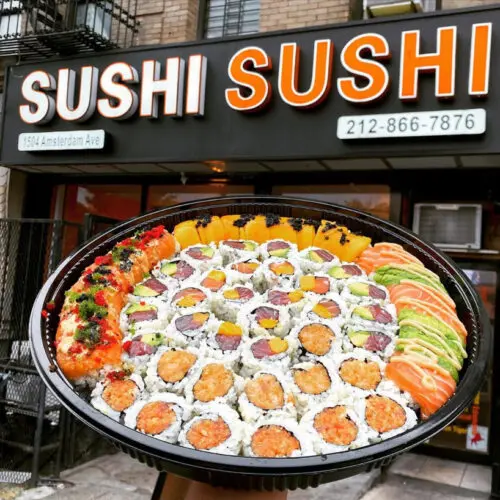Sushi VS Sashimi Explained
Enjoying the diverse culinary offerings, including excellent Japanese restaurants, often leads to questions about menu terms. One common query revolves around "sushi" versus "sashimi." While both are highlights of Japanese cuisine and often involve fresh seafood, they represent distinct culinary concepts. Let's clarify the difference to enhance your dining experience.
The Heart of Sushi: Seasoned Rice
The essential element that defines sushi is shari – specially prepared rice seasoned with vinegar, sugar, and salt. Any dish properly called "sushi" must contain this unique, slightly tangy, and sticky rice. It serves as the foundation or a key component, regardless of the other ingredients used. Think of the seasoned rice as the soul of sushi.
Sashimi: The Purity of Sliced Seafood
In contrast, sashimi is all about the featured ingredient itself, served without any rice. It consists of expertly cut slices of very fresh, high-quality raw fish or other seafood. The entire focus is on the natural flavor and texture of the main item – be it tuna, yellowtail, scallop, or salmon. Sashimi is typically presented beautifully, often with decorative elements, and accompanied by soy sauce, wasabi, and pickled ginger to complement or cleanse the palate.
Sushi: A Category Defined by Rice
Because its definition hinges on the presence of vinegared rice, "sushi" is a broad category encompassing many styles. While raw fish is perhaps the most famous pairing, sushi can also feature cooked shrimp, crab, smoked salmon, grilled eel, Japanese egg omelet (tamago), various vegetables like cucumber and avocado, or even tofu skin (inari). The common thread is always the shari.
Spotlight on Nigiri: A Sushi Staple
One of the most classic and popular forms of sushi is Nigiri. This style involves a small, oblong pad of hand-pressed sushi rice topped with a single slice of an ingredient, most frequently raw fish. However, cooked items are also common nigiri toppings. Often, the chef will place a small amount of wasabi between the rice and the fish for a subtle kick. Nigiri beautifully marries the flavor of the topping with the complementary taste of the seasoned rice.
Choosing Your Experience: Sushi vs. Sashimi
Ultimately, sushi and sashimi offer different ways to appreciate fine seafood. Sashimi provides an unadulterated taste of the ocean's bounty, focusing solely on the premium fish or shellfish. Nigiri sushi offers a more complex bite, balancing the topping with the distinct flavor and texture of the vinegared rice. While sashimi necessitates chopsticks, nigiri can traditionally be eaten with either chopsticks or clean hands. Both are typically enjoyed with wasabi, soy sauce, and pickled ginger readily available. From a basic nutritional standpoint, sashimi is primarily protein, whereas nigiri combines protein with carbohydrates from the rice.
